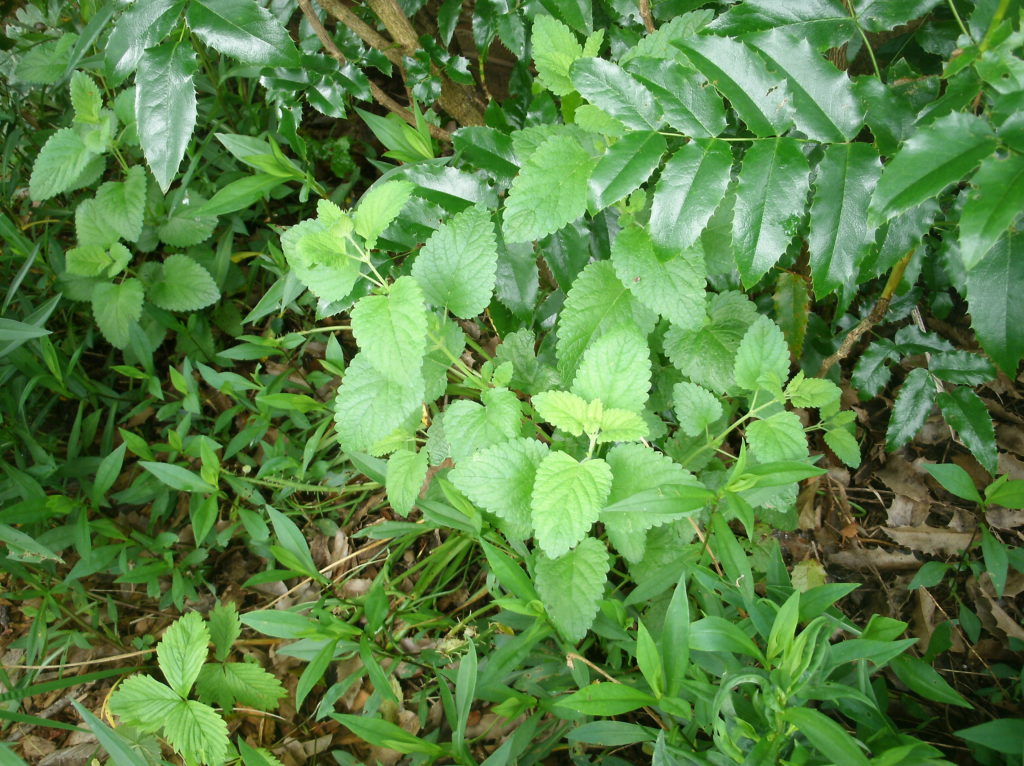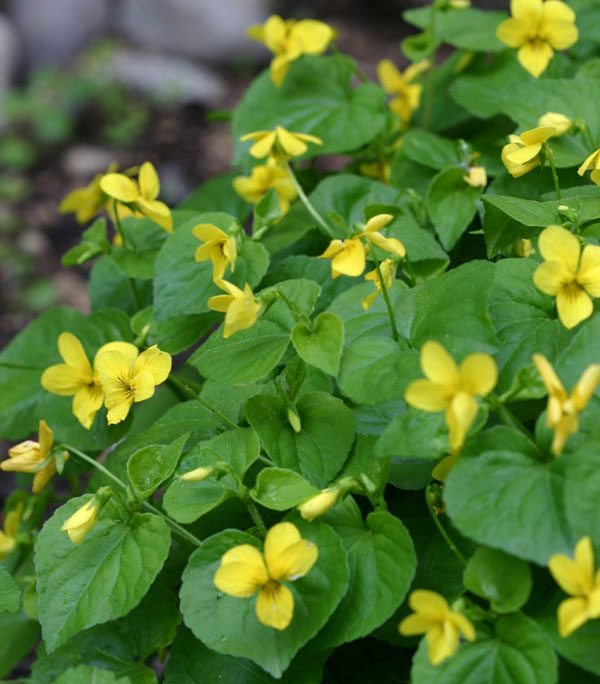
Invasive: Lemon balm (Melissa officinalis)
Characteristics: Lemon balm is a fast-spreading, perennial member of the mint family. Like many mints, this one has hairy, square stems and a strong scent to its leaves; the twist here is that the aroma is unmistakably lemon! Lemon balm reaches 45-75 cm (18-30”) in height; its ovate, toothed leaves are typically 5 cm (2”) long by 3.5 cm (1.5”) wide. The nectar-laden flowers are attractive to bees and vary in color; white, light blue, yellow, or rose-colored blossoms come out in late spring to early summer, with seeds ripening through the summer (July-September).
Spread: Lemon balm spreads both by seeds (it is self-sowing) and by an aggressive, fibrous root system (the photo is from my yard, where it’s muscling its way into a bed of asters!). It is more shade-tolerant than most herbs, and can therefore spread readily under forest canopy (though it will also grow in sun). Native to southern Europe and the Mediterranean, it was introduced here as an ornamental, and is also used for culinary and medicinal purposes; a tea may be made of the leaves, or–if you dry them and put them in a fabric bag–it makes a nice lemon-scented sachet to throw in the dryer.
Control: Dead-heading of flowers prevents seed set; hand-digging of the whole plant will remove it fairly easily. Installing edging or other weed barriers to a depth of 6” or so can help prevent local vegetative spread.

Native Replacements: Stream violet (Viola glabella—pictured above) is a native perennial, producing beautiful yellow flowers in spring, that will do well in shady areas. Beach strawberry (Fragaria chiloensis), an evergreen wild strawberry, would make an excellent replacement for lemon balm in sunny areas.
